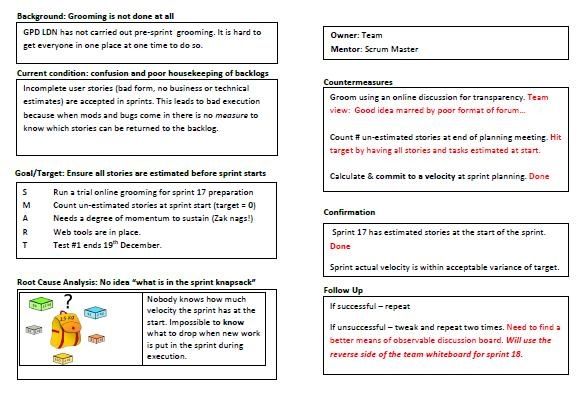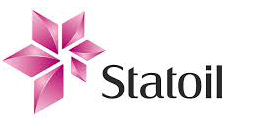Statoil
Trading Support
A trading support team had been running in Scrum configuration, reporting into an overarching ITIL process, for a couple of years at Satoil. They had taken the agile tenet of self organisation to an extreme: they had used it to justify their own cut down version of Scrum.
By running outside the bounds of the Delivery Model the middle managers were being constantly chided by the senior managers because the team could not report metrics to meet Service Level Agreements. We helped fix that.
Scant attention had been paid to the rituals of planning, reviews or retrospectives. Backlog grooming was non-existent. They were described as a dysfunctional team by managers and peers.
Comscientia was asked to measure and the cultural and climate, facilitate explorative discussions to identify problems, define a solutions based approach then carry out remedial work.
Initial Measurements to Explore
Following the cultural discussion the Ekvall climate dimensions were dot voted. As the teams had been established for some time so the voting was to record what individuals felt about their work environment. Each person was invited to vote for or against each dimension they thought was present in their respective environments.
Ekvall Climate Dot Vote results.
Shocked? Look again. The team did not comprehend Freedom as a dimension in the work place. Most did not understand playfulness either. Playfulness scored a solitary vote – against!
Problems
From a managerial perspective the team was not performing well enough to justify its continuation. There were another 19 teams doing similar work and they were performing acceptably.
The middle managers were very unhappy because the team was missing key Service Level Agreement metrics based on the commitment of their sprints.
From an internal perspective there were problems that one sensed. The climate assessment helped identify the lack of freedom and a lack of playfulness as dimensions to focus on. In short the ‘prisoner dilemma’ atmosphere within the team had to be corrected.
Proposed Solution
The steps to change the climate were bottom up.
To provide a sense of freedom it was important to hand back ownership of the work to the team. They had to be trusted to do things in the way that their peers did. Role rotation was also proposed as a way of gently moving people out of their comfort zones and sharing knowledge.
Implementation
Estimation and Delivery
Tom Peters advocates ‘Creative Swiping’ as an easy way to get moving. The team decided to copy another team’s way of working: Scrumban (In Scrum the sprint backlog is fixed at the start of the sprint. With Scrumban work items that need immediate action can be taken in while the sprint is underway.)
Transparency
As the new process was being implemented a few A3 experiments were introduced. These evidence based Plan, Do, Check, Act (PDCA) initiatives can be run inside sprints. They have contingency plans so that if the initial targets are not met secondary and tertiary actions can be taken. If after 3 attempts the results do not reflect the SMART goals drop the initiative.
One A3 plan to implement grooming of the product backlog was carried out by the whole team.
A3 Plan and updates to introduce backlog grooming.
Other A3 experiments were run over a 4 month period. They were a mixture of team based experiments and individual coaching as required.
Results
The recorded sprint delivery can be seen below:
It shows that after an initial decline there was a sprint on sprint increase in work reported. It is possible that the team had been doing this amount of work – but – they had not been reporting it. It destroyed trust between the team and their colleagues.
Once the team understood that the scrum process fed into a higher level governance process they were happy yo report accurately and increase their ability to produce realistic commitment metrics.
After 3 months a quick health check was run on the climate. The results show that there was still one person against freedom and there were 2 pro conflicts.
Lessons Learned
- When there is no concept of what a dimension is there are likely to be underlying issues.
- A3 evidence based experiments allow for ‘changing the wheel while the car is moving’
- Copy what is successful in other teams. Methods and processes are corporate resources. It is better to re-use what is proven to work.
- Low freedom and playfulness point to a team with “prisoners’ dilemma”: They stay silent. Coaxing information from them requires winning their trust. A3 experiments reduced the intra-team conflict as the focus is on the outcome.
- If scrum is part of a larger Delivery Model the teams must be helped to understand that they are not simply running scrum-by-the-book. Teams need to appreciate the use of their metrics in higher level processes and Service Level Agreements so that the team, middle and senior managers can be seen to be performing at acceptable levels.






